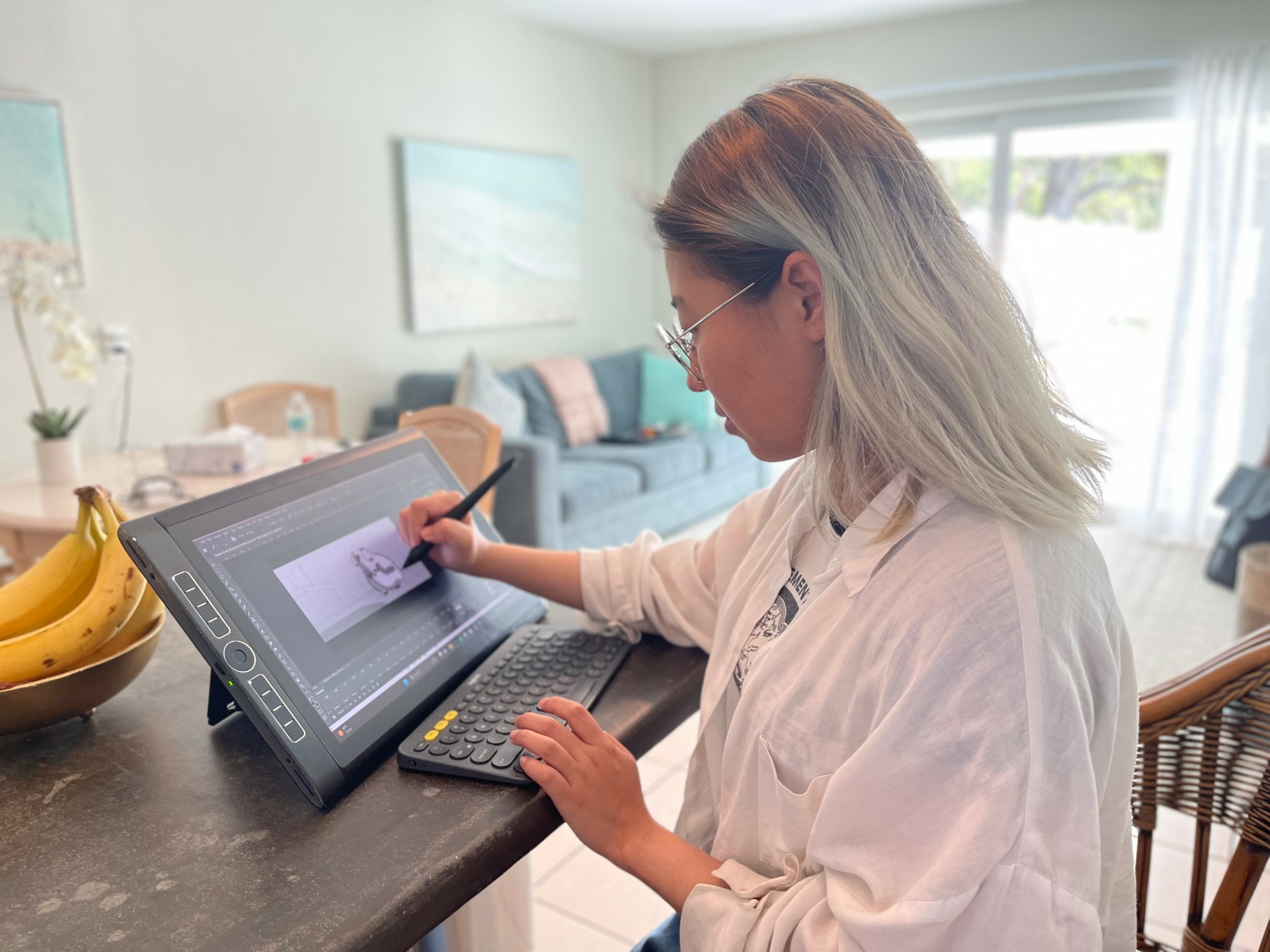We recently connected with Christina Park and have shared our conversation below.
Hi Christina, thanks for joining us today. Can you talk to us about how you learned to do what you do?
After discovering my passion for storyboarding, I was determined to find ways to learn and improve my skills in the field. I proactively reached out to industry artists, seeking their advice and insights into animation to help guide me in the right direction. I frequently asked for feedback from peers and professionals and took additional online classes to further my education beyond what my school offered.
One of my biggest challenges was managing my time effectively for storyboarding. Although I have more freedom now, during college, my commitment to the computer animation program often limited my ability to focus solely on honing my storyboarding skills. Although my formal education was crucial, I often wished I had more time to refine my draftsmanship and expand my visual library. If I could change one thing, it would be to spend more time drawing regularly and improving my skills. And if I couldn’t draw, I would have watched more films.
As a storyboard artist, it’s essential to keep our hands moving—to sketch quickly and capture ideas on the fly. But just as important is developing a strong visual library by watching movies. Observing how directors strategically position the camera to stage characters within the frame in visually compelling ways helps us as storyboard artists learn how to effectively convey a story when interpreting a script.


As always, we appreciate you sharing your insights and we’ve got a few more questions for you, but before we get to all of that can you take a minute to introduce yourself and give our readers some of your back background and context?
From a young age, I was always an artist at heart. I loved watching animated shows, especially those featuring animals and creatures, and I would draw them every day without stopping. Even after moving from America to Korea, my passion for art never wavered. Interestingly, it wasn’t until high school when a teacher casually mentioned that people actually make animated films that I realized I could pursue art as a career. That moment sparked something in me, and I began researching opportunities, eventually discovering Ringling College of Art and Design.
Determined to follow my passion, I decided to return to America to study animation. It was there that I discovered my love for storyboarding and realized I wanted to become a storyboard artist—someone who has the power to plan out shots using visual storytelling before they are brought to life in the final production.
What I’m most proud of is the fact that I chose this path on my own, guided by my passion and determination. While I am still navigating my journey toward this goal, I believe that hard work is the key to success. If there’s something you truly want, you have to put in the effort to achieve it.


What’s a lesson you had to unlearn and what’s the backstory?
I’ve always taken pride in my strong work ethic, and whenever there were plans or deadlines, I would often sacrifice my free time to ensure everything was completed. However, as I continued my life with this workaholic mindset, I eventually realized I was living in a bubble, missing out on fun activities and personal time. One day, while trying to brainstorm ideas for my personal storyboards, I found myself completely stuck. Friends suggested I draw from my own experiences, but I couldn’t think of a single moment to capture because my life had been consumed by work.
It was a wake-up call—I realized I hadn’t allowed myself to enjoy life, meet people, or participate in events that spark creativity. This experience taught me that while hard work is important, it’s equally crucial to have fun, gather personal experiences, and live a well-rounded life. Only then can I create stories that resonate with and touch people’s hearts.


Are there any books, videos, essays or other resources that have significantly impacted your management and entrepreneurial thinking and philosophy?
Many people talk about this book, and I think it truly lives up to its title. “Save the Cat!” by Blake Snyder is an excellent guide that teaches you how to write a story strategically to capture your audience. The structure is broken down in a way that’s easy to understand, making it perfect for anyone new to scriptwriting or storytelling. As a storyboard artist, I find it crucial to learn about storytelling through books like this. Another great resource that helped me is “The Visual Story: Creating the Visual Structure of Film” by Bruce Block. It offers detailed insights into how camera placement is used to shoot scenes in a visually appealing way, breaking down complex concepts into simpler terms for easier understanding.
In terms of videos, I frequently watch StudioBinder on YouTube. They offer a fantastic range of videos that break down specific movies and explain professional filmmaking terms with clear, engaging film examples that are easy to understand. I often rewatch their content and even discover great movies to watch through their examples.
Contact Info:
- Website: https://www.christinaparkportfolio.com/
- Instagram: https://www.instagram.com/chris_draws15/
- Linkedin: https://www.linkedin.com/in/christina-seung-yeon-park-90591a15a/
- Youtube: https://www.youtube.com/@christinapark838




